Your link profile plays a crucial part in strengthening the backbone of your website’s SEO. It significantly influences your domain authority and trustworthiness in the eyes of Google and other search engines.
If you don’t keep your link profile healthy, your website may look spammy and even get penalized for manipulating search results using low-quality links and linking websites.
In this link profile guide, we’ll discuss:
- What a website’s link profile refers to and why it matters
- What a good, healthy, and natural link profile looks like
- How to audit your link profile (+ ways to improve it with high-authority links)
And more!
So, let’s dive into the pivotal role a link profile plays in improving your search engine rankings and online visibility.
What is a Link Profile?
A link profile refers to all the backlinks pointing to your website. Building links from high-authority and reputable websites shows search engines like Google that those websites trust your site as a useful resource on the topic, helping you rank higher in the search engine results for related queries.
In addition to the total number of inbound links, your website’s SEO link profile consists of:
- The types of links pointing back to your site
- The anchor text of those inbound links
- How those external links directing to your site were acquired
For example, here’s a quick overview of the backlink profile of ClickUp, a project management tool. The site has 3.2M incoming links from 32.8K referring domains.
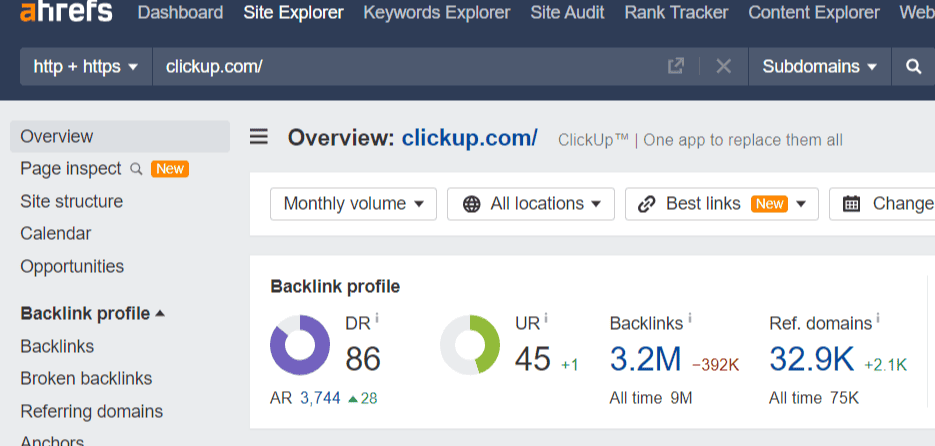
Why is a Good Link Profile Important for Search Engine Optimization?
High-quality links make search engines understand that your content is useful, reliable, and has actionable tips. Therefore, building a robust link profile offers several SEO advantages.
- Your link profile serves as a significant factor affecting your search engine rankings on Google and other search engines. The search engines will rank your content higher for relevant queries if they trust your website’s authority and credibility.
The more “votes” (high-quality backlinks) you have from reputable websites linking to your domain, the higher your page will likely rank in the search results.
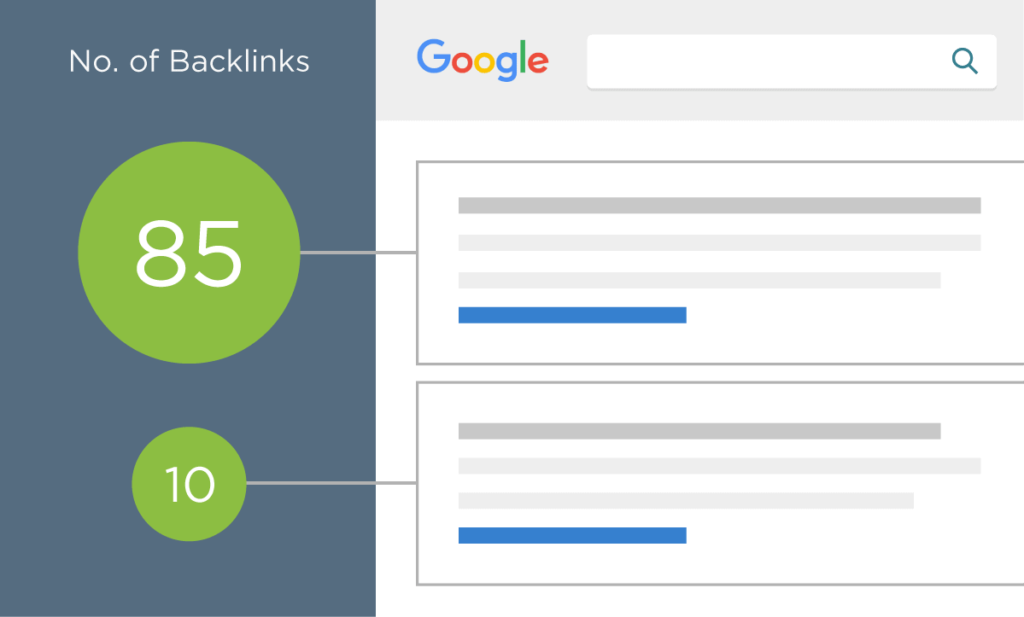
- Higher search engine rankings for target keywords result in higher organic traffic and leads for your business. They help you attract your target audience to your business.
- When other high-authority sites link back to your resources and brand name, it improves your website’s authority and contributes to your search engine optimization (SEO) results.
On the other hand, if your website has many low-quality links, the search engines will cite it as a link building strategy to manipulate search rankings. The search engines can also penalize your website for using such practices.
That’s why you need to invest in building relevant links from high-authority sites to ensure your site has a healthy link profile.
What Should a Website’s Link Profile Look Like?
A good or healthy link profile has links directed from high-authority sites. The anchor text of your backlinks should be contextually relevant and not overly keyword-optimized. Additional key elements include:
The links pointing to your site should be placed naturally with non-spam anchor text; not forcefully. For example, the backlink profile of goinswriter.com has no spam score when checking in Moz.
- Majority of the links should come from websites with topical relevance to your website. For example, if you sell coffee makers, then your website should not have a link from a law related website.
- You should focus on link diversity, which means a variety in the type of links and anchor texts. Even branded anchor texts can have variations like the example below.
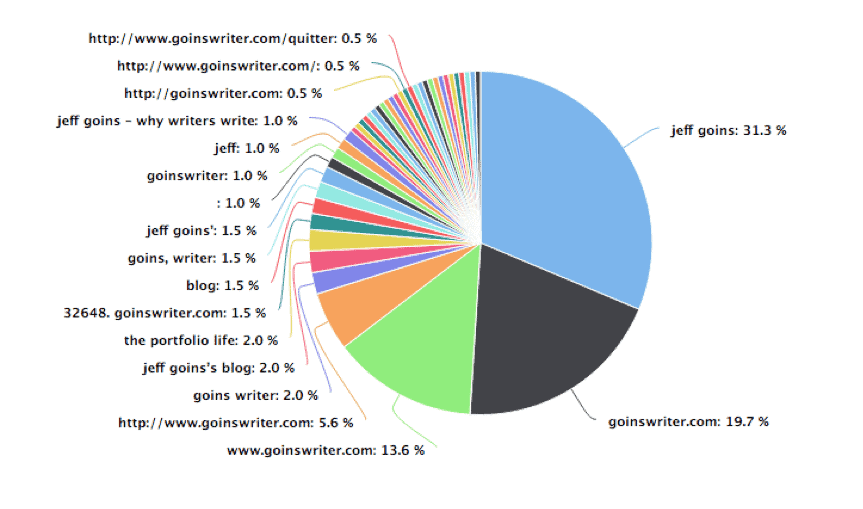
- Your SEO link profile should not have many low-authority links from low-quality sites. Even the few links you have from low DA websites should be 100% topically relevant.
For example, even the low-quality links in goinswriter.com’s link profile come from highly relevant websites related to “writing,” which reflects topical relevance.

Now that you know what a good link profile looks like, let’s look at how to analyze your link profile’s health.
How to Analyze Your Link Profile (And Ways to Improve It)
You can use SEO tools like Ahrefs, Moz Link Explorer, or Semrush’s Backlink Audit Tool to check the quality and health of your SEO link profile. Here are a few factors you should consider while auditing your backlink profile:
1. Check the link velocity
Healthy link profiles have a gradual upward graph of building backlinks and also a gradual growth in the number of websites linking to your site. You should not see a sudden surge of backlinks or referring domains at any point in time.
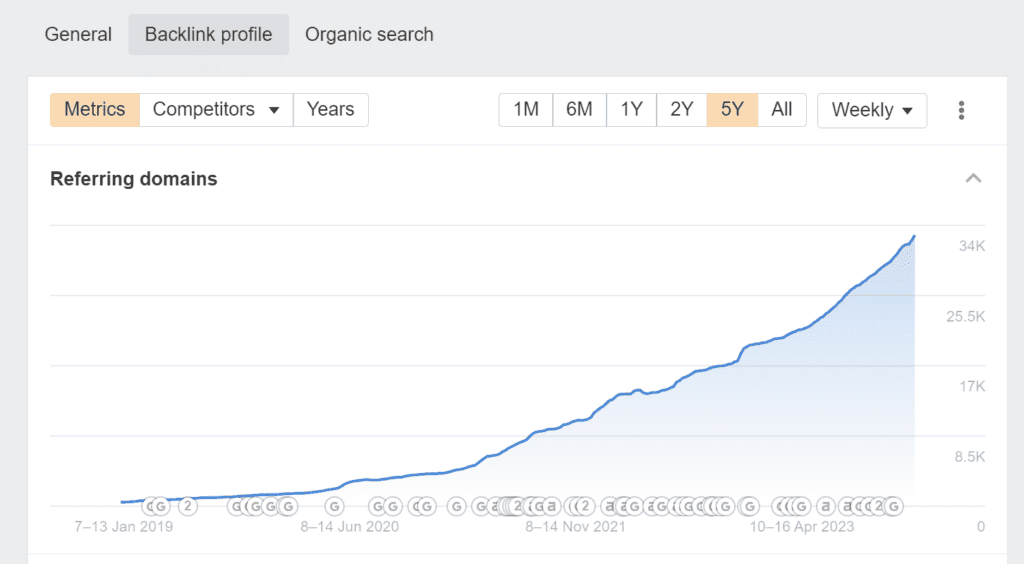
Referring domains’ gradual growth graph for ClickUp
Large spikes or drops in your link profile will look unnatural to Google and other search engines. The search engines will flag it as unethical link building and may penalize your website.
2. Check the authority and organic traffic of your referring domains
There should be a diversity in your referring domains, most of which should be high authority sites.
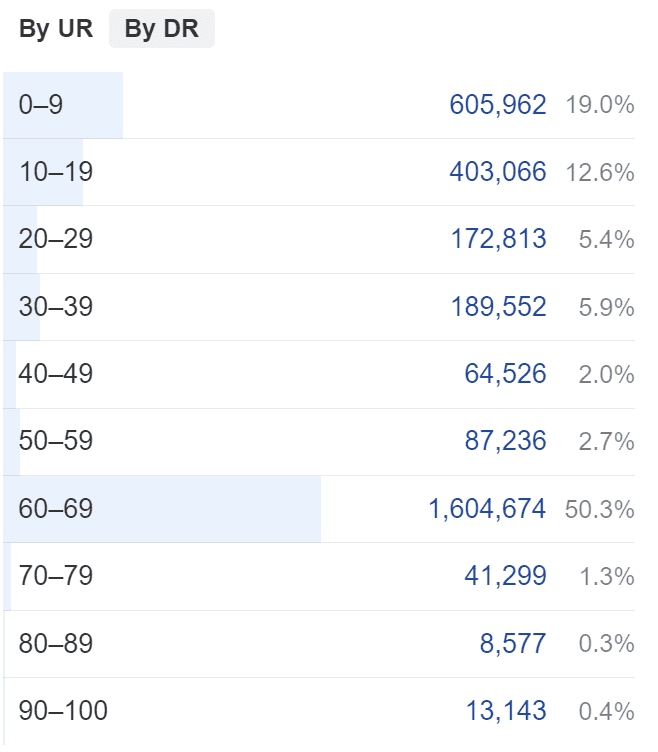
DR share of the referring domains of ClickUp
You should prioritize building links from websites that have a greater organic domain and page traffic. These are sites that Google and other search engines trust.
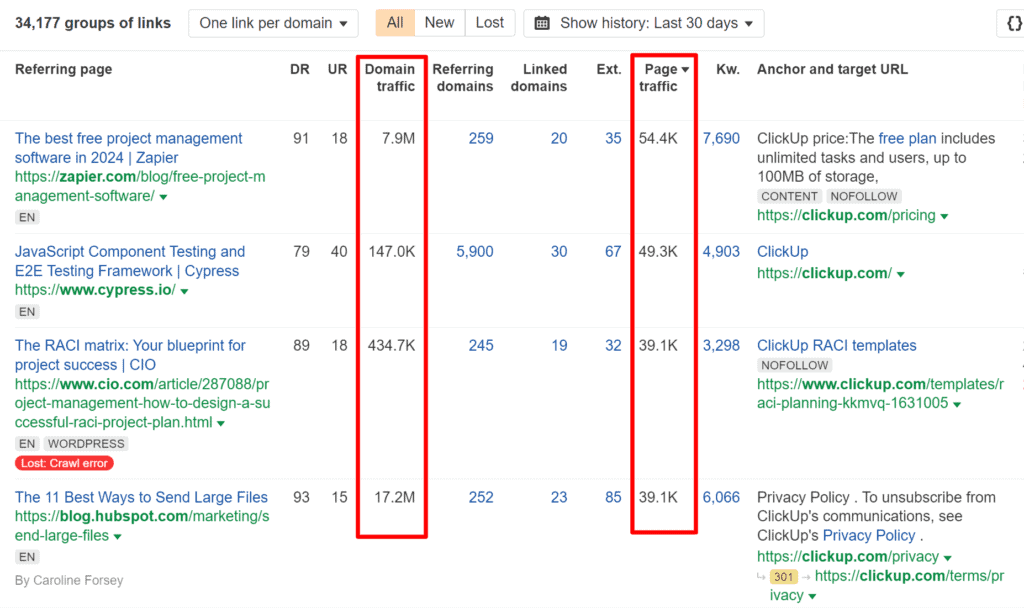
Domain traffic and page traffic of pages referring to ClickUp
3. Check the anchor text of all the links directing to your site
Along with using your brand name as anchor text, there should be a mix of contextually relevant anchor texts. Some backlinks can also come from image-based links instead of text links.
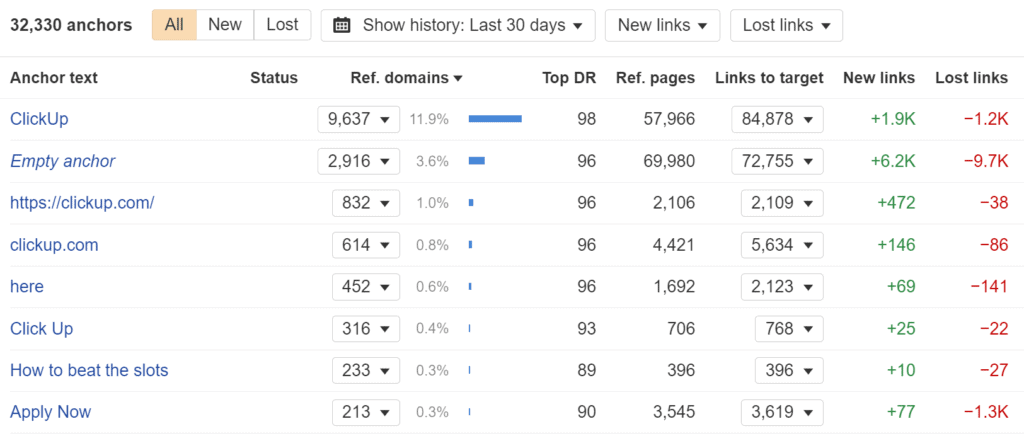
Top anchor texts for ClickUp.com domain
Ensure that you don’t stuff keywords in your anchor text or clickable text. Overusing keyword-rich anchor text can be seen as spammy and may be penalized by search engines.
4. Check the topical relevance of your backlinks and referring domains
Just considering metrics like high DR and high organic traffic isn’t enough. What matters most is the relevance of the websites linking to yours to your niche and audience.
5. Check broken links and revive high-quality links
A quick way to improve the health of your link profile is to identify broken links and reach out to publishers to rebuild high-quality backlinks you lost recently.
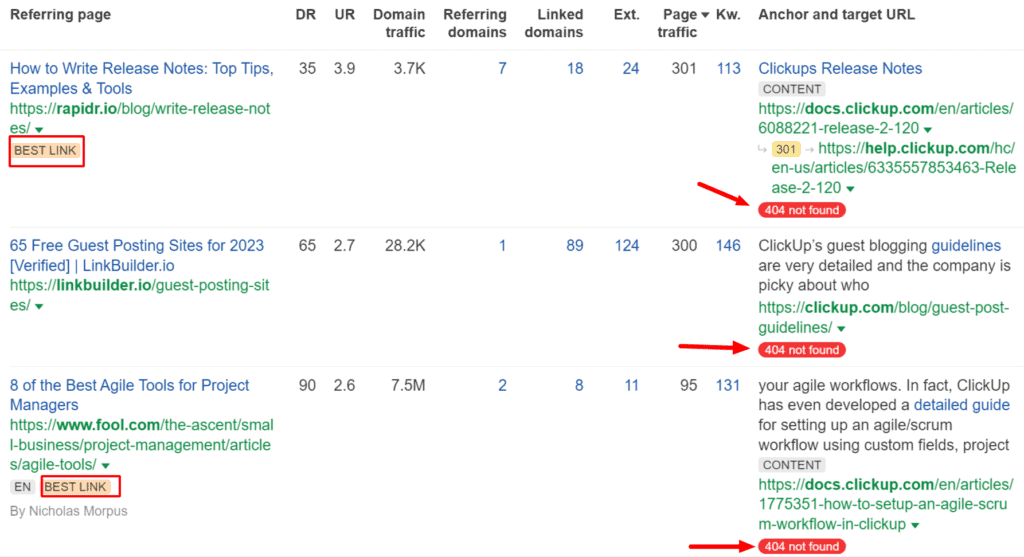
As you can see above, two lost links were high-quality links in ClickUp’s link profile. For such links, you can reach out to the publisher with an alternate relevant resource and earn the link back.
We understand that not all the links are created equal but a majority of your backlinks should meet the relevance, high authority, and high organic traffic checkmarks. That’s the key to building a robust link profile that boosts your search engine optimization game.
Ready to Build a Solid Link Profile to Boost Your Visibility on Search Engines?
Building a good SEO backlink profile is an ongoing task. It is important to keep an eye on your link profile over time, ensure that it is natural and diverse, and keep optimizing it.
When building incoming links, you should focus on metrics like:
- Link relevance
- Anchor text diversity
- Link equity
- Linking domain to total links ratio
- Referring domain authority and organic traffic
- Link placement
Don’t indulge in building low-quality links from link farms or other websites. Instead, create high-quality content that naturally attracts backlinks from reputable sites.
Are you finding link building overwhelming? Then, take advantage of our link building services for the best results. Just tell us how many backlinks you need and we’ll help you create high-quality content, publish guest posts, attract high DR HARO links, and reach out to relevant websites for your link building campaign.
Our high-quality links cost less than setting up your in-house link building team. Connect with us now to improve your link profile!

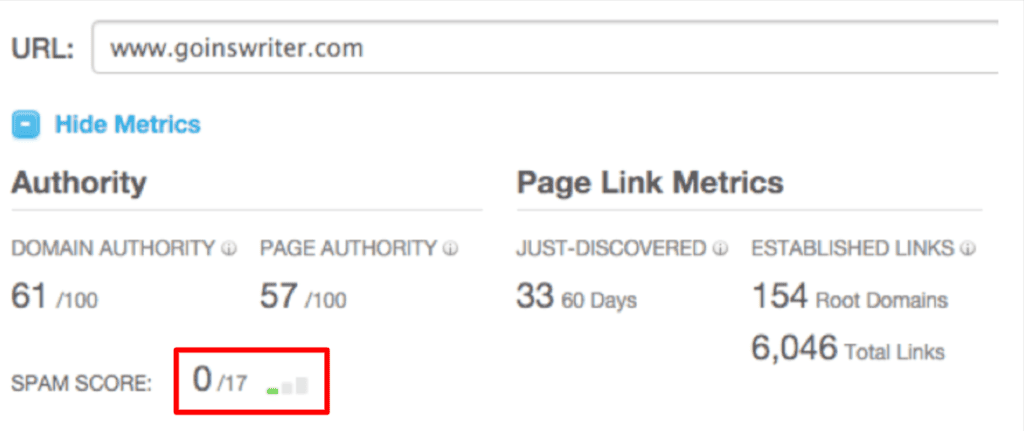



![how to do link exchanges safely [google-proof methods]](https://tanotsolutions.com/wp-content/uploads/2024/02/how-to-do-link-exchanges-safely-google-proof-methods-1024x683.jpg)